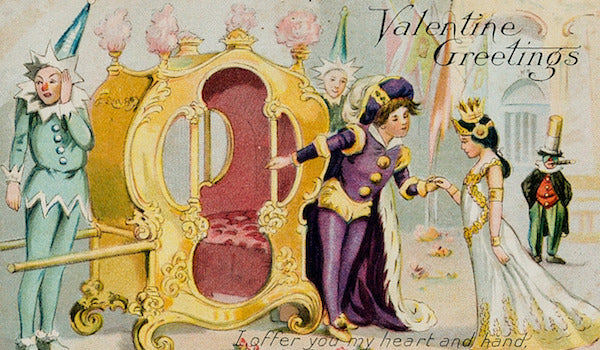
Signed, Sealed, Delivered
As many of us sign off on our Valentine's Day cards this week, we go back to the 13th century, to discover its origins...

There is nothing like love to inspire the written word, and the first European greetings cards were Valentines, sent in Germany in the mid-13th century. The medieval period was less romantic it seems, as cards fell from favour only becoming truly popular with the advent of the penny post in 1840. In the Victorian era, greeting card production became a lucrative industry, a development that coincided with a downturn in fortunes of silk manufacturers who faced serious competition from new artificial silks. Coventry ribbon manufacturer Thomas Stevens applied indomitable Victorian ingenuity, inventing the Stevengraph to save his flagging business. Based on the Jacquard loom method, it used punched cards to weave thousands of coloured threads into anything from simple floral sprays to replicas of famous paintings.

Inspired by Stevens' success, other manufacturers followed suit. Bradford company, W N Sharpe published 'The Patent FAB Patchwork Card' which had a decorative square of silk that could be cut out and worked into a pin cushion or tea cosy. Raphael Tuck's bright printed cards were immensely popular, but with the addition of silk fringe they captured a new following. The most luxurious were enfolded within padded, scented covers, and all were packed with Victorian sentiment as overblown as the roses they featured.

The golden age of postcards came with the First World War when people were far from loved ones. These cards, embroidered with regimental badges, the flags of the allies and patriotic messages, are singled out by Mark Hannam of Bonhams; 'Military cards are collectable and will often sell in excess of £5 or more. Rarer cards would be portrait, shipping and scenes of French towns in flames like "Arras" and can command prices of £25 or more.'...
You can read this article by Sarah Jane Downing in full in Selvedge issue 27.
